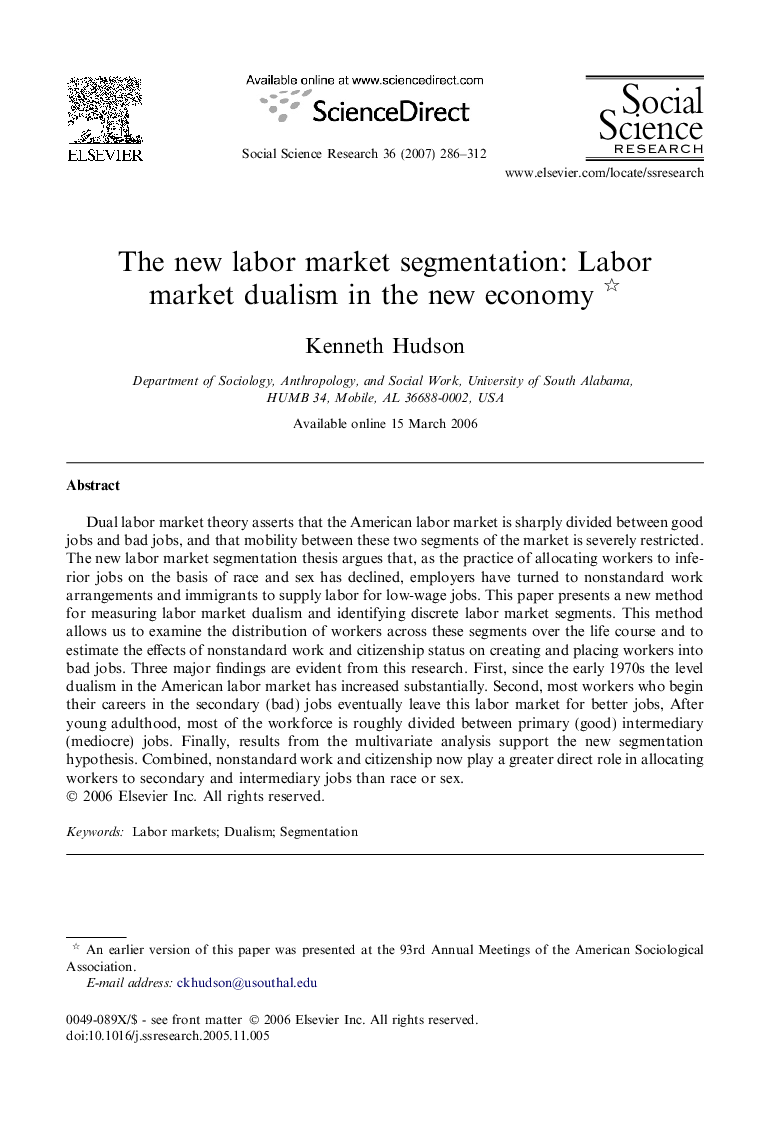| Article ID | Journal | Published Year | Pages | File Type |
|---|---|---|---|---|
| 956484 | Social Science Research | 2007 | 27 Pages |
Dual labor market theory asserts that the American labor market is sharply divided between good jobs and bad jobs, and that mobility between these two segments of the market is severely restricted. The new labor market segmentation thesis argues that, as the practice of allocating workers to inferior jobs on the basis of race and sex has declined, employers have turned to nonstandard work arrangements and immigrants to supply labor for low-wage jobs. This paper presents a new method for measuring labor market dualism and identifying discrete labor market segments. This method allows us to examine the distribution of workers across these segments over the life course and to estimate the effects of nonstandard work and citizenship status on creating and placing workers into bad jobs. Three major findings are evident from this research. First, since the early 1970s the level dualism in the American labor market has increased substantially. Second, most workers who begin their careers in the secondary (bad) jobs eventually leave this labor market for better jobs, After young adulthood, most of the workforce is roughly divided between primary (good) intermediary (mediocre) jobs. Finally, results from the multivariate analysis support the new segmentation hypothesis. Combined, nonstandard work and citizenship now play a greater direct role in allocating workers to secondary and intermediary jobs than race or sex.
